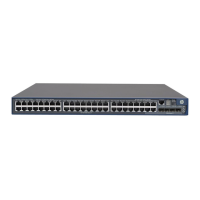237
Description
Use the pki entity command to create a PKI entity and enter its view.
Use the undo pki entity command to remove a PKI entity.
By default, no entity exists.
You can configure a variety of attributes for an entity in PKI entity view. An entity is intended only for
convenience of reference by other commands.
Examples
# Create a PKI entity named en and enter its view.
<Sysname> system-view
[Sysname] pki entity en
[Sysname-pki-entity-en]
pki import-certificate
Syntax
pki import-certificate { ca | local } domain domain-name { der | p12 | pem } [ filename filename ]
View
System view
Default level
2: System level
Parameters
ca: Specifies the CA certificate.
local: Specifies the local certificate.
domain-name: Name of the PKI domain, a string of 1 to 15 characters.
der: Specifies the certificate format of DER.
p12 : Specifies the certificate format of P12.
pem: Specifies the certificate format of PEM.
filename filename: Specifies the name of the certificate file, a case-insensitive string of 1 to 127
characters. It defaults to domain-name_ca.cer or domain-name_local.cer, the name for the file to be
created to save the imported certificate.
Description
Use the pki import-certificate command to import a CA certificate or local certificate from a file and save
it locally.
Related commands: pki domain.
Examples
# Import the CA certificate for PKI domain cer in the PEM format.
<Sysname> system-view
[Sysname] pki import-certificate ca domain cer pem

